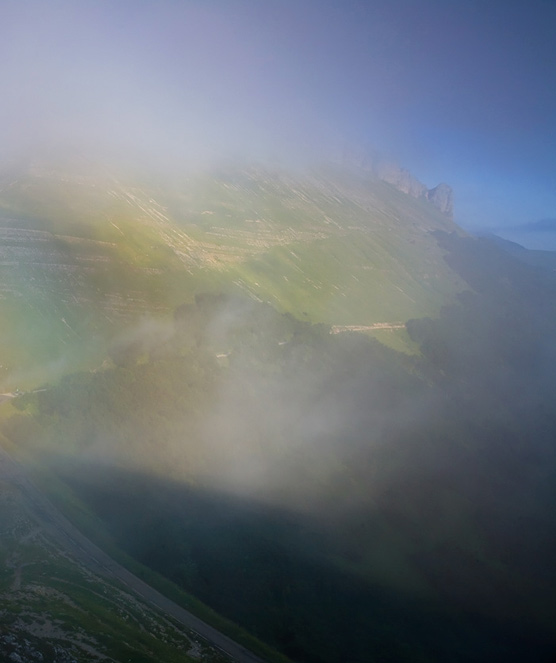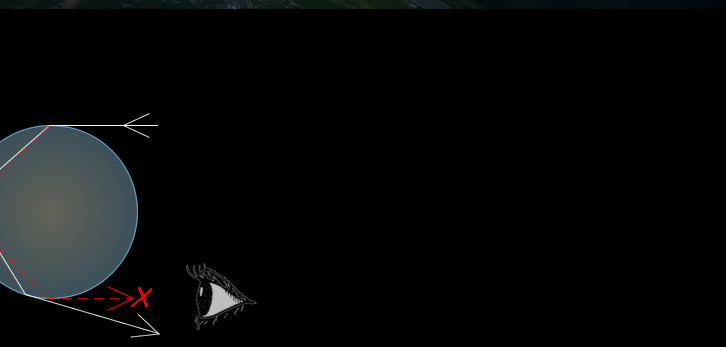The sun shines through the thin mountain mist to give two separate optical effects. The first, the 'Brocken Spectre' is easy to explain. It is the 3D shadow of the photographer extending through the mist.
The second, the glory, the coloured rings around the point directly opposite the sun is less easy.
We know that it is a diffraction effect where waves scattered from different parts of an object combine to give a coloured fringe pattern. The scattering objects here are mist droplets.
We know, from the glory's polarisation, that waves are reflected inside the droplets.
But, the ray/wave path 'X' directing light 180° from its original direction to produce the glory centre is impossible. The actual path would be the white one shown.
There is a 14.4° gap along the droplet periphery that somehow must be bridged for light to emerge as it is actually seen.
There is a process only possible over the short distances of small mist droplets where waves travel along and close to the surface ~ surface waves.
Analysis using a reformulation of Mie-Lorentz theory by Peter Debye (see Philip Laven's thorough account) shows that the major glory contribution is from waves internally reflected once. There are lesser contributions from waves internally reflected 5,6 and 10 times.
|








